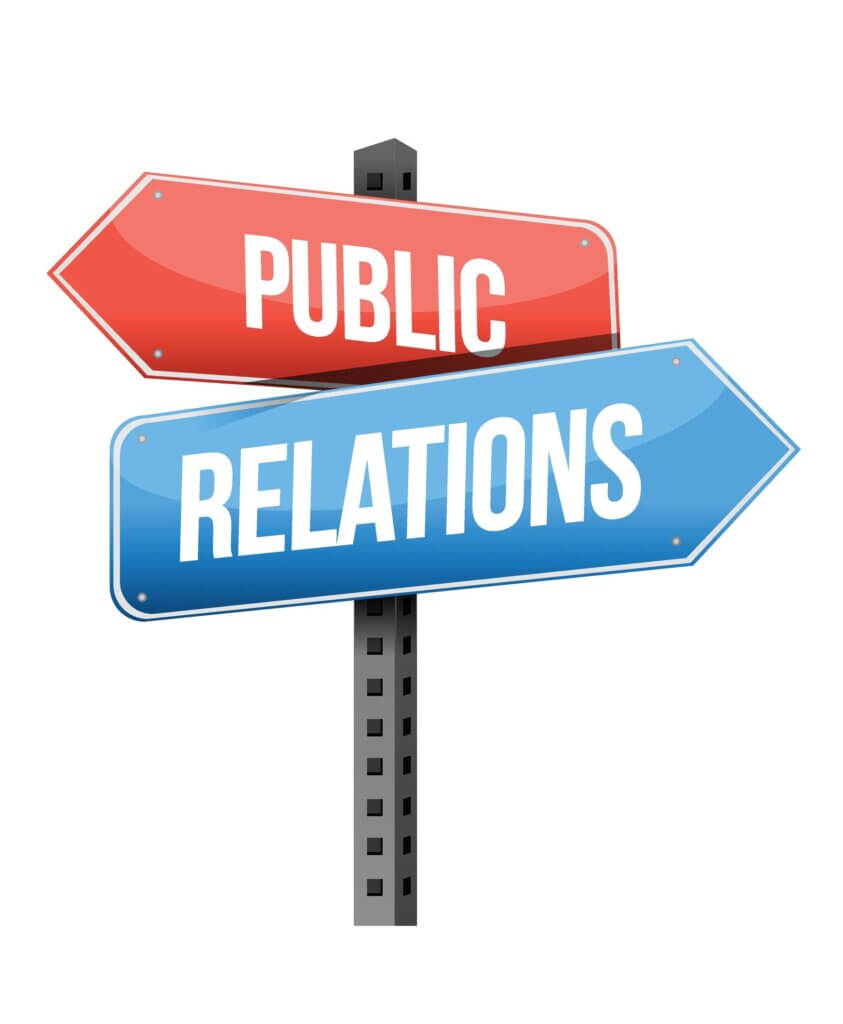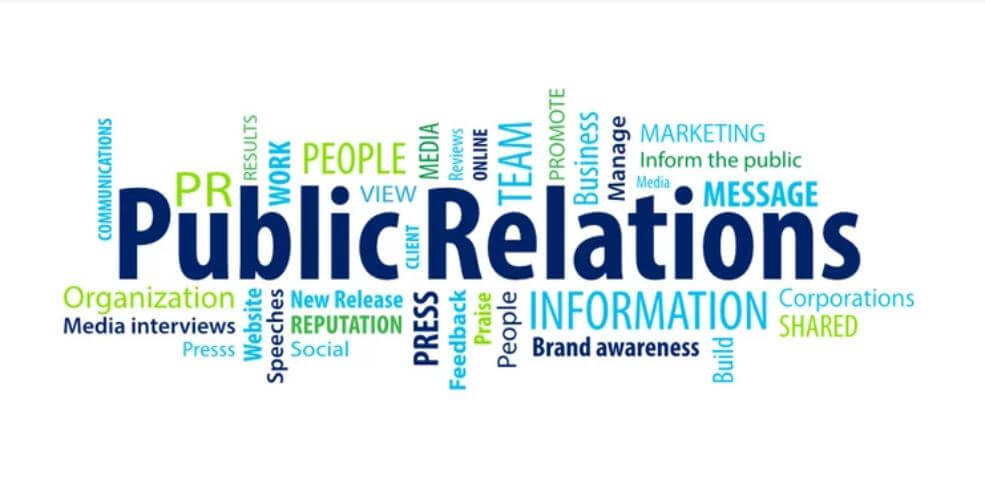Public Relations Marketing
Introduction to Public Relations Marketing
Public Relations Marketing, also known as PR Marketing, is a critical component of a company’s overall marketing strategy. PR marketing involves managing the company’s image and reputation through various communication channels. The primary goal of PR marketing is to build and maintain a positive image of the company and its products or services, which ultimately leads to increased sales and customer loyalty.
Definition of Public Relations Marketing
Public Relations Marketing is defined as the deliberate, planned, and sustained effort to establish and maintain mutual understanding between an organization and its public. It involves managing communication between an organization and its stakeholders, including customers, employees, shareholders, and the general public. PR marketing influences and shapes public perceptions and attitudes about the organization and its products or services.

Importance of Public Relations Marketing
The importance of PR marketing cannot be overstated. Companies must do everything they can to stand out and be noticed in today’s highly competitive business environment. A strong PR marketing plan can help organizations differentiate themselves from the competition and establish a positive reputation. By building and maintaining solid relationships with stakeholders, companies can foster trust, credibility, and loyalty, which are essential to success.
Furthermore, PR marketing helps organizations manage their image and reputation during crises. Companies must have a well-thought-out crisis communications plan in today’s fast-paced, 24/7 news cycle. A well-executed PR marketing plan can help organizations respond quickly and effectively to any crisis, minimizing the damage to their image and reputation.
In conclusion, PR marketing is critical to a company’s overall marketing strategy. It helps organizations build and maintain a positive image, differentiate themselves from the competition, and manage their reputation during crises. A well-executed PR marketing plan is essential for any organization that wants to achieve long-term success.
Understanding the Target Audience
Understanding the target audience is vital to any successful public relations marketing campaign. Knowing the target audience and what they care about is critical to developing an effective PR marketing plan. By understanding the target audience, companies can tailor their messaging and communication strategies to best reach and engage their target audience.
Conducting Market Research
The first step in understanding the target audience is conducting market research. Market research can be as simple as reviewing customer feedback or as complex as conducting focus groups and surveys. Companies can gather information about their target audience by:
- Analyzing customer data and feedback
- Monitoring social media and online forums for customer opinions
- Conducting surveys and focus groups
The information gathered from market research should be used to create a detailed profile of the target audience, including demographics, preferences, attitudes, and buying behavior.
Defining Target Demographics
Once the target audience has been thoroughly researched, companies can then define the target demographics. Demographic information, such as age, gender, income, education, and geographic location, provides valuable insight into the target audience’s preferences and buying behavior. With this information, companies can tailor their PR marketing messages and communication strategies to reach and engage their target audience better.
In conclusion, understanding the target audience is crucial to any successful PR marketing campaign. Companies can tailor their messaging and communication strategies by conducting market research and defining target demographics to best reach and engage their target audience. This leads to more effective PR marketing campaigns and increased success.
Developing the Public Relations Marketing Plan
Once the target audience has been thoroughly researched and understood, companies can develop their public relations marketing plan. A well-developed PR marketing plan lays out the goals, objectives, and strategies for building and maintaining a positive image and reputation for the company and its products or services.
Setting Objectives
The first step in developing a PR marketing plan is setting objectives. Objectives should be specific, measurable, achievable, relevant, and time-bound (SMART). Examples of PR marketing objectives include:
- Increase brand awareness by X% within the next 12 months
- Improve customer satisfaction by X% within the next 6 months
- Increase media coverage by X% within the next 9 months
Identifying Key Messages
Once the objectives have been set, the next step is identifying key messages. Key messages are concise statements that communicate the company’s brand and value proposition. They should be consistent across all communication channels and align with the PR marketing objectives. Key messages should be memorable and easy to understand so the target audience can readily recall and understand the company’s brand and value proposition.
Choosing the Right Channels
The final step in developing a PR marketing plan is choosing the proper channels to reach the target audience. Companies can reach their target audience through various channels, including traditional media (such as television and print), digital media (such as social media and websites), and events (such as trade shows and product launches). Companies should choose channels that are most effective for reaching their target audience and align with their PR marketing objectives.
In conclusion, developing a PR marketing plan is critical to a successful PR marketing campaign. By setting objectives, identifying key messages, and choosing the proper channels, companies can effectively reach and engage their target audience and build and maintain a positive image and reputation.
Implementing Public Relations Marketing Tactics
Once the PR marketing plan has been developed, the next step is implementing PR marketing tactics to reach and engage the target audience. The tactics should align with the PR marketing plan and support the company’s objectives.
Media Relations
Media relations is one of the most crucial PR marketing tactics. It involves building relationships with journalists, bloggers, and other media influencers to secure media coverage for the company and its products or services. Companies can implement media relations tactics by:
- Creating and distributing press releases to announce new products, events, or other newsworthy items
- Building and maintaining relationships with journalists and bloggers in the company’s industry
- Providing journalists with expert commentary on industry news and trends
Influencer Marketing
Influencer marketing involves partnering with individuals with a large social media following to promote the company’s products or services. Companies can implement influencer marketing tactics by:
- Identifying and partnering with influencers who align with the company’s brand and values
- Providing influencers with product samples or other incentives to promote the company’s products or services
- Monitoring influencer campaigns to measure their effectiveness.
Event Marketing
Event marketing involves creating events, such as product launches, trade shows, and sponsored events, to promote the company and its products or services. Companies can implement event marketing tactics by:
- Planning and executing events that align with the company’s PR marketing objectives
- Inviting journalists, bloggers, and other media influencers to attend events
- Using events to generate media coverage for the company and its products or services
Digital Marketing
Digital marketing involves using digital channels, such as social media, websites, and email marketing, to reach and engage the target audience. Companies can implement digital marketing tactics by:
- Developing a solid social media presence on platforms where the target audience is active
- Creating engaging content, such as blog posts, infographics, and videos, to attract and engage the target audience
- Using email marketing to reach the target audience with news, promotions, and other updates
In conclusion, implementing PR marketing tactics is critical to a successful PR marketing campaign. Companies can effectively reach and engage their target audience and build and maintain a positive image and reputation by using media relations, influencer marketing, event marketing, and digital marketing.
Measuring the Success of Public Relations Marketing
Once PR marketing tactics have been implemented, it’s essential to measure their success to determine their effectiveness and make any necessary adjustments to the PR marketing plan.
Establishing Metrics
The first step in measuring the success of PR marketing is establishing metrics. Metrics should align with the PR marketing objectives and allow companies to measure their progress toward achieving them. Examples of PR marketing metrics include:
- Brand Awareness: Measuring the percentage of the target audience that is aware of the company and its products or services
- Media Coverage: Measuring the number of media placements and the reach of those placements
- Influencer Engagement: Measuring the level of engagement with influencer marketing campaigns, such as likes, comments, and shares
- Event Attendance: Measuring the number of attendees at events and their level of engagement with the company and its products or services
- Website Traffic: Measuring the number of visitors to the company’s website and the actions they take while on the site
Tracking Metrics
The next step in measuring the success of PR marketing is tracking metrics. Companies should regularly track their PR marketing metrics, such as monthly or quarterly, to monitor their progress and make any necessary adjustments to their PR marketing plan. Tracking metrics can be done manually or using PR marketing software.
Analyzing Results
The final step in measuring the success of PR marketing is analyzing the results. Companies should interpret the results of their PR marketing efforts to determine their effectiveness and make any necessary adjustments to their PR marketing plan. Companies should look for trends and patterns in the data and identify areas where improvements can be made.
In conclusion, measuring the success of PR marketing is a critical component of a successful PR marketing campaign. By establishing metrics, tracking metrics, and analyzing results, companies can effectively evaluate the effectiveness of their PR marketing efforts and make any necessary adjustments to their PR marketing plan. This allows companies to continuously improve their PR marketing efforts and achieve their PR marketing objectives.
Ethical Considerations in Public Relations Marketing
When conducting PR marketing activities, it’s important to consider ethical considerations to ensure that the company and its PR marketing efforts are perceived as trustworthy and credible. The following are some of the key ethical considerations in PR marketing:
Honesty and Transparency
Honesty and transparency are critical in PR marketing. Companies should be transparent about their products, services, and claims. Companies should also be honest about their PR marketing tactics and avoid making false or misleading statements.
Respect for Privacy
Companies should respect the privacy of their target audience and customers. This includes avoiding collecting and using personal information without consent and avoiding using tactics that invade privacy, such as spamming.
Fairness
Companies should treat all stakeholders fairly and avoid discrimination. This includes avoiding using tactics that unfairly target specific groups and avoiding making false or misleading claims about competitors.
Responsibility
Companies are responsible for acting in the best interests of their stakeholders and the general public. This includes avoiding making false or misleading claims and using tactics that could harm the public.
In conclusion, ethical considerations play a critical role in PR marketing. By being honest, transparent, respectful of privacy, fair, and responsible, companies can build and maintain a positive image and reputation and ensure the success of their PR marketing efforts. Ethical considerations are also essential to protect the company from legal and reputational risks.
Conclusion
Public Relations (PR) marketing is critical to a successful marketing campaign. It involves using PR tactics to build and maintain a positive image and reputation for the company and its products or services. PR marketing is different from advertising as it focuses on building relationships with stakeholders, including the media, customers, influencers, and the general public, through tactics such as media relations, influencer marketing, events, and content marketing.
A well-planned PR marketing campaign can help companies achieve their marketing objectives, such as increasing brand awareness, building customer loyalty, and improving their reputation. PR marketing efforts can also help companies differentiate themselves from their competitors and position themselves as leaders in their industry.
When developing a PR marketing plan, it’s essential to understand the target audience, create a plan that aligns with the company’s marketing objectives, and implement PR marketing tactics that are effective and consistent with the company’s image and reputation. Measuring the success of PR marketing is also critical to ensure that the PR marketing efforts are practical and to make any necessary adjustments to the PR marketing plan.
In addition, ethical considerations play a critical role in PR marketing. Companies should be honest, transparent, respectful of privacy, fair, and responsible when conducting PR marketing activities to ensure their PR marketing efforts are perceived as trustworthy and credible.
In conclusion, PR marketing is essential to a successful marketing campaign. By developing a well-planned PR marketing plan, implementing effective PR marketing tactics, and measuring the success of PR marketing efforts, companies can build and maintain a positive image and reputation and achieve their marketing objectives.
F.A.Q
What does a PR marketing person do?
A PR marketing person is responsible for developing and implementing public relations (PR) strategies to build and maintain a positive image and reputation for a company or organization. The following are some of the critical responsibilities of a PR marketing person:
- Media Relations: Building and maintaining relationships with the media and pitching stories to journalists to secure positive media coverage for the company or organization.
- Influencer Marketing: Identifying and collaborating with influencers to promote the company or organization’s products or services.
- Content Marketing: Developing and executing content marketing strategies to engage with target audiences and build brand awareness.
- Event Management: Organizing and executing events to promote the company or organization and its products or services.
- Crisis Management: Developing and executing crisis communication plans to respond to adverse events and protect the company or organization’s reputation.
- Reputation Management: Monitoring and managing the company or organization’s reputation and taking steps to enhance its positive image.
- Analyzing and Reporting: Monitoring and analyzing PR metrics to measure the success of PR marketing efforts and report on the results to stakeholders.
In summary, a PR marketing person is responsible for building and maintaining a positive image and reputation for a company or organization through various PR tactics, including media relations, influencer marketing, content marketing, event management, crisis management, reputation management, and analysis and reporting.
What are the 4 types of public relations?
The four types of public relations are:
- Media Relations: managing relationships with journalists and media outlets.
- Crisis Management: addressing harmful situations that affect the organization.
- Employee Relations: managing communication between the organization and its employees.
- Investor Relations: managing communication between the organization and its investors and stakeholders







